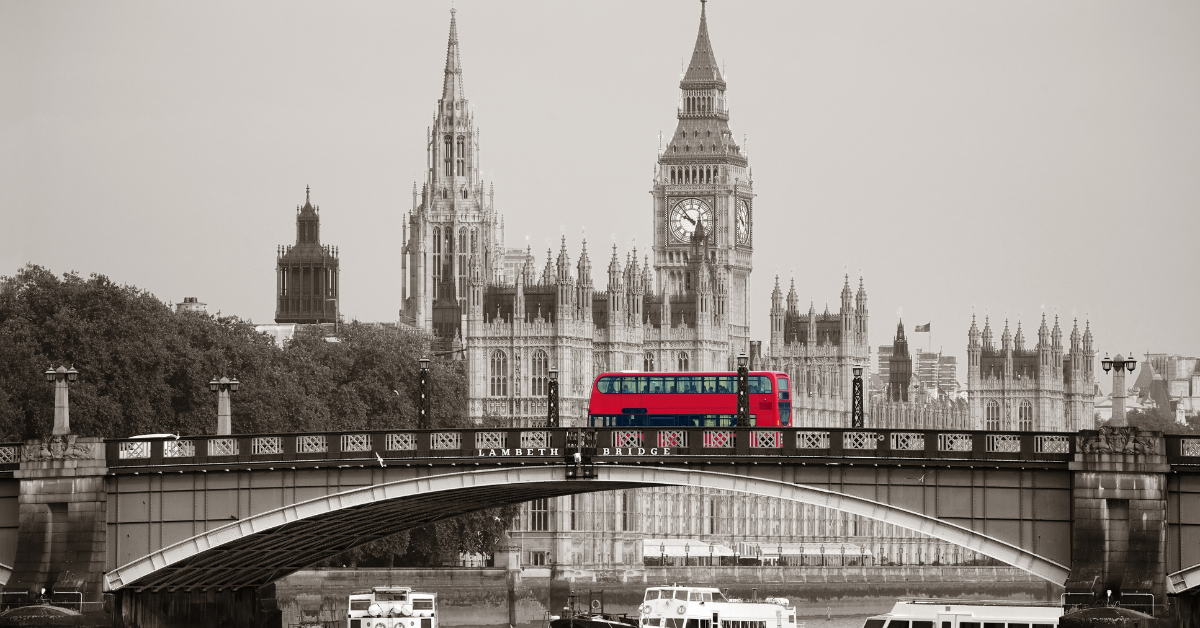When foreigners study Japanese, they may be surprised to see London written as 倫敦 instead of ロンドン. This is not a mistake but a product of Japan’s historical use of kanji to represent foreign sounds. Understanding why London became “倫敦” reveals not only a linguistic curiosity but also a deep story about how Japan absorbed global culture through its writing system.
The Background of Replacing Foreign Place Names with Kanji
From the late Edo period to the Meiji era, Japan adopted the practice of writing foreign city names with kanji that sounded similar, instead of using katakana as we do today. At that time, newspapers and translated books were increasing, and texts written primarily in kanji were considered easier to read and more prestigious.
China had long used kanji to represent Western cities. For example, Rome was written as 羅馬, Paris as 巴里, and Berlin as 伯林. Japan imported these spellings and used them naturally.
Examples of kanji spellings include:
| City | Kanji Spelling | Reading |
|---|---|---|
| Rome | 羅馬 | Roma |
| Paris | 巴里 | Pari |
| Berlin | 伯林 | Berurin |
| London | 倫敦 | Rondon |
These spellings focused on sound reproduction rather than meaning, and also provided a sense of visual harmony within the text.
The Origin of the Kanji Spelling “倫敦”
The Japanese pronunciation of London is “Ron-don”. To represent this, kanji were chosen mainly for their phonetic similarity.
| Sound | Kanji Used | Original Meaning |
|---|---|---|
| Ron | 倫 | Order, ethics |
| Don | 敦 | Warmth, sincerity |
What is crucial here is that the spelling prioritized sound over meaning. The characters 倫 and 敦 do not describe London as a city. They were chosen simply because their readings matched the sound.
Why Kanji Instead of Katakana?
Before the modern era, katakana was considered supplementary, not suitable for formal or scholarly writing. For this reason, kanji were preferred for foreign names, giving them an air of authority and formality.
The main reasons include:
| Reason | Explanation |
|---|---|
| Textual harmony | Kanji gave consistency and balance to the text |
| Chinese influence | China had already established kanji spellings for foreign names |
| Printing convenience | Movable type printing was easier to manage with kanji |
Thus, 倫敦 became widely accepted and used naturally in newspapers, academic works, and official documents.
How “倫敦” is Used in Modern Japan
Today, the standard spelling is “ロンドン” in katakana. Textbooks, maps, news reports, and official documents rarely, if ever, use “倫敦”.
However, it still survives in literature, design, and cultural contexts. For example, in novels set in the Meiji or Taisho periods, the word “倫敦” is often used to evoke the atmosphere of the time. In retro-style posters or artistic designs, the use of kanji can give a sense of weight and cultural depth.
Comparison with Other Foreign Cities
London is not unique in this respect. Many cities had similar kanji spellings. The following table shows how Japan and China represented major Western cities:
| English Name | Japanese Kanji | Chinese Kanji | Katakana Spelling |
|---|---|---|---|
| London | 倫敦 | 倫敦 | ロンドン |
| Paris | 巴里 | 巴黎 | パリ |
| Berlin | 伯林 | 柏林 | ベルリン |
| Rome | 羅馬 | 羅馬 | ローマ |
| Moscow | 莫斯科 | 莫斯科 | モスクワ |
The similarity between Japanese and Chinese shows that these spellings were transmitted through Chinese sources before becoming part of Japanese writing.
Phonetic Adjustments in Japanese
When adapting foreign words into Japanese, phonetic adjustments are often necessary due to differences in sound systems.
| English Sound | Japanese Adaptation | Example |
|---|---|---|
| L | Replaced by “R” sound | London → ロンドン |
| Consonant clusters | Extra vowels inserted | Berlin → ベルリン |
| Final consonants | Rendered with “ン” (n) | London → ロンドン |
Through these processes, the form “ロンドン” was established. From there, the kanji spelling 倫敦 was created to match the sound.
The Historical Transition of Spelling
The mainstream representation of foreign names changed over time.
| Period | Common Spelling | Characteristics |
|---|---|---|
| Late Edo | Chinese-based kanji | Used in Dutch studies and translations |
| Early Meiji | Kanji spellings (倫敦 etc.) | Popular in newspapers and journals |
| Taisho–Showa | Kanji and katakana coexisted | Katakana grew in textbooks |
| Postwar Japan | Katakana standardized | Kanji spellings seen as historical |
Thus, 倫敦 is a linguistic relic that reflects Japan’s interaction with the world.
Conclusion
London is written as 倫敦 because of Japan’s historical practice of translating foreign names into kanji based on sound. The spelling was strongly influenced by Chinese usage, widely adopted in Japanese newspapers and academic works of the 19th century.
Today, katakana is standard, but 倫敦 survives in literature, art, and retro design as a symbol of cultural depth. It is more than an old spelling—it is a record of how Japan absorbed foreign words into its own writing system.
For foreigners, learning about “倫敦” offers a fascinating window into the richness and adaptability of the Japanese language.






